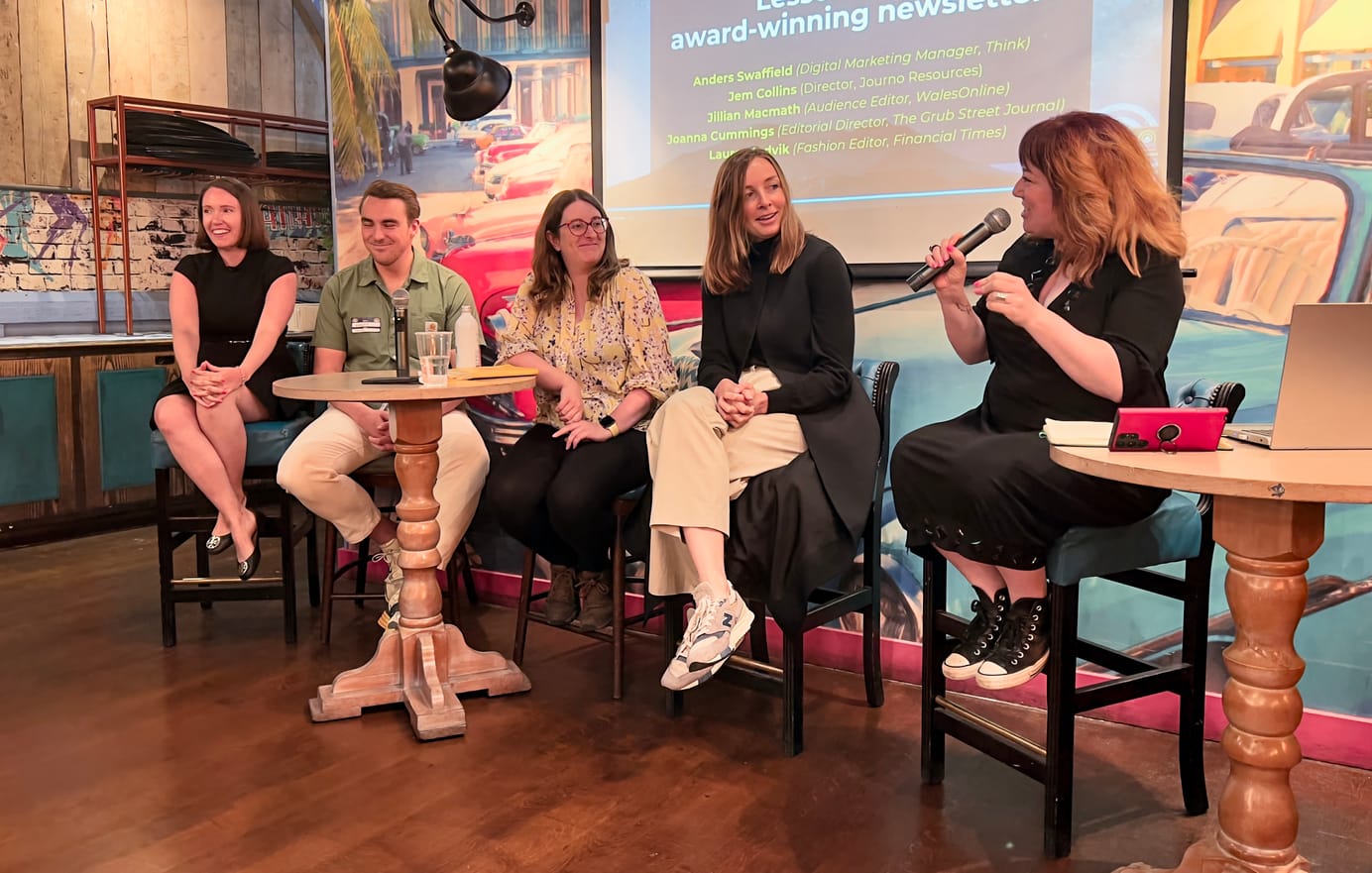
Newsletters: Rise of the Blogletter
Why today's newsletter actually take a lot from blogging and why The Economist is on Instagram: answered.
Newsletters. It's impossible to think about audience engagement right now without talking about newsletters. As often happens when publishing detects a new frontier, a gold rush develops, and too many of the would-be stake claimers just don't understand what they're doing.
In short, a good newsletter is much more than just a newsletter.
Let's explore that.
When a blog and a newsletter love each other very much…
In Marie Dollé's recent newsletter she coins a new portmanteau term:
The emergence of blogletters (Yup I just made up the term... it's mine! ;)
Although… there is prior art on the use of the name. 😇
I like the term. It fits. There are two major characteristics that separate this newsletter form from other styles. (Yes, newsletters come in other flavours. That's a discussion for another time.)
So, what is a blogletter? The chances are that you're reading these very words as a blogletter right now. This very, very old blog is actually most read via email right now. My readership looks roughly like:
email -> RSS -> web
But you could be reading it on the web, too. So, this is both a newsletter issue and a blog post. That's the delight of digital - things can exist in more than one place, in more than one form.
Email is a convenient and controllable delivery method, compared to the many algorithms out there. So one could argue that a blogletter is just a blog delivered as a newsletter. For example, John Naughton has done exactly that with his long-running blog.
But this isn't just about platforms. What most newsletters of this type have inherited from blogs is tone of voice.
The majority of successful newsletters have a distinct person — or group of people — behind them. They make their presence felt, they introduce the content. They become familiar social touchpoints. And that creates relationship, and relationship creates loyalty. And those are exactly the phrases I used to use back when my job title was “head of blog development” over a decade ago.
That central idea — that personal connection leads to relationship — applies just as strongly to blogletters as the blogs of a decade ago.
Now, this doesn't work for everybody, and certainly some communities actively dislike their approach. That's why there's room for more than one style of newsletter: those other newsletters don't really fall under the "blogletter" moniker or style.
But what defines a blogletter is more than just tone-of-voice, too.
More than just a newsletter
The current wave of newsletters are as much websites are they are newsletters. As Marie explains:
Substack offers newsletters associated with a site and not the other way around. In other words, you create a newsletter and when you send it to your audience, the article is also published online. This technique hits two birds with one stone: the audience enjoy the newsletter and the website nudges the interested audience to subscribe because of the call-to-actions (CTAs) embedded into it. Everything is done to ensure that the visitor subscribes.
The trap most people fall into with newsletters is seeing them as a promotional tool for some other product. They're not. They're an expression of that product through a different medium. For large publications, link of them as sub-products within your overall audience strategy, aiming at a community of passion or interest.
For the self-starters on Substack, they're actually creating a new website, with the newsletter as their principal audience engagement tool. And it's this centrality of email in the reader relationship that makes some people wary:

He expresses motivations very similar to the ones that keep me on Ghost as my tech stack.
Blogletter economics
And, before we move on, it's worth noting that Benedict Evans is taking his newsletter paid shortly:
I started this newsletter in early 2013 as an experiment. 150,000 people read it now, so it worked out quite well, and now I'm trying another experiment.
Beginning this month, I'm adding a premium, paid tier.
Back of the envelope: let's go low and suggest that 1% of current subscribers convert. That's $15,000 per month. Not bad for writing two newsletters a week - and nothing stops him continuing his consultancy work on top of that.
I'd take that. 🙂
One key thing: he's making the newsletter archive a member benefit. As I've always said - there's gold in them there archives.
Newsletters will start to become a crowded space - but there's plenty of growth yet in the blogletter micro-publications. And newsletters that think of themselves as both a product and as part of a site will have a competitive advantage.
Why The Economist is on the 'gram
It's about the next generation of subscribers.
As we sharpen our focus on identifying, acquiring and retaining the next generation of readers and subscribers, this community of more than 3m young people appears hungry for news and has been engaging with us more than ever in recent months.
This is exactly the same argument they gave about Snapchat three years ago.

Well, gee, it's almost like readers are people
It's really not a surprise that if you treat people well, they think better of you. It perhaps says something about the world of journalism that research proving this has to be highlighted in this way.
As reader revenue gets more important, we need to get better at treating our readers well. And “thank you” is the bare minimum for that.

Community management the Facebook way
Facebook is offering free courses in online community management. I'm not feeling too threatened, as it's very much about Facebook community management, not anything broader.

The Lean Back Read: Assumption is the mother of all bad writing
If you can read this, without consciously reassessing your writing — especially those of you from a B2B background — you are more self-assured in your writing than I am.

Sign up for e-mail updates
Join the newsletter to receive the latest posts in your inbox.













